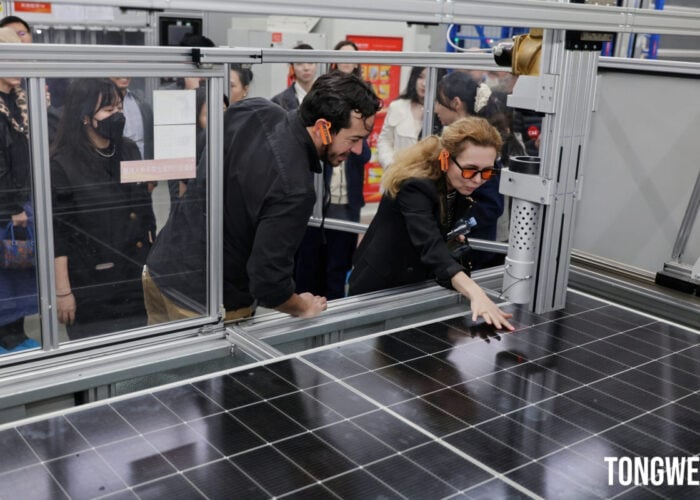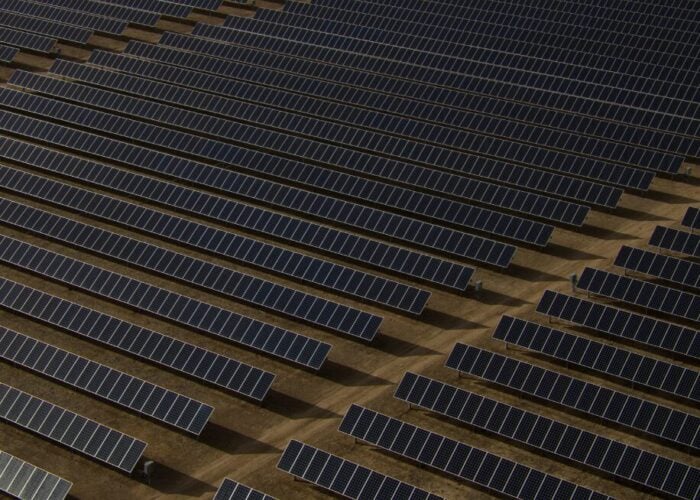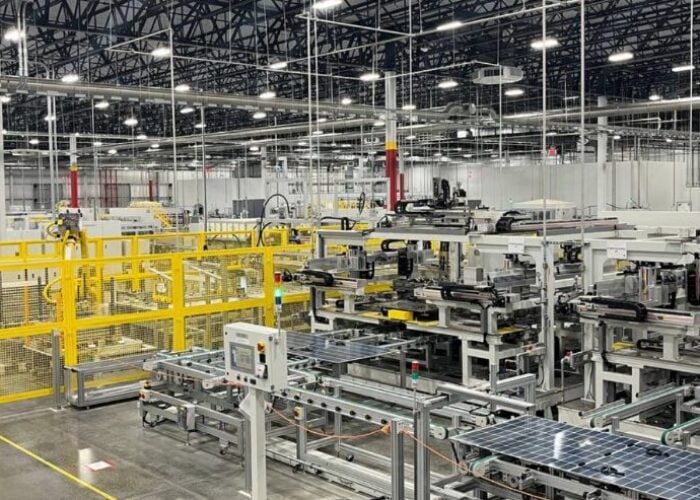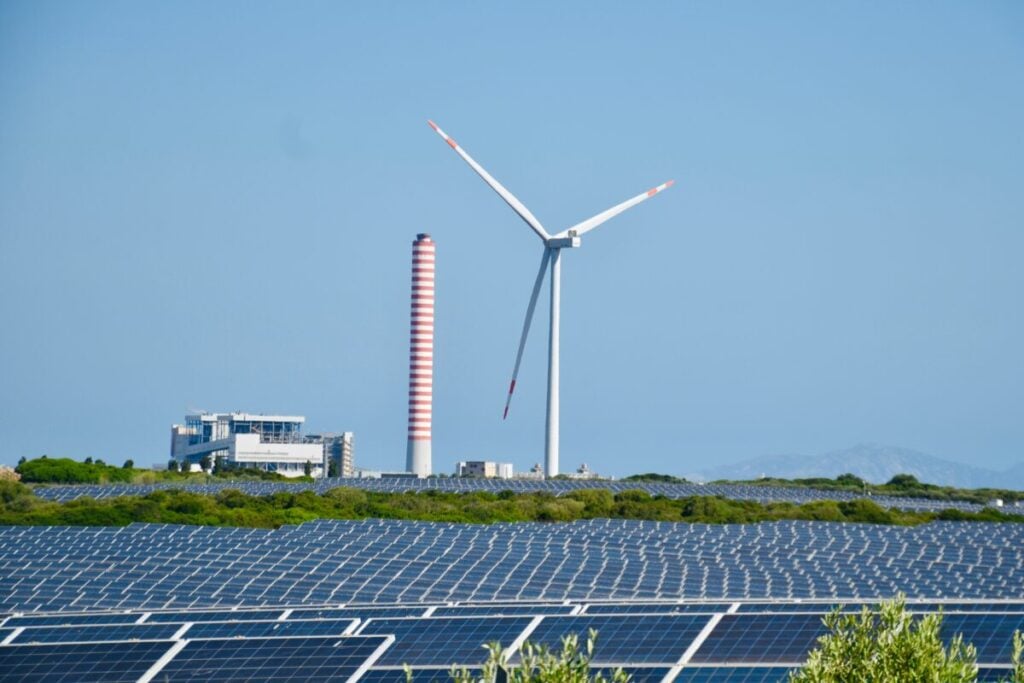
Expanded electrification of Europe’s energy system underpinned by solar and wind power would secure EU energy independence and security by ending fossil fuel imports.
This is the key conclusion drawn by the latest report from Ember Climate, ‘Shockproof: how electrification can strengthen EU energy security’. Published today, the report highlights that reliance on imported fossil fuels is a key weakness in Europe’s energy security.
Try Premium for just $1
- Full premium access for the first month at only $1
- Converts to an annual rate after 30 days unless cancelled
- Cancel anytime during the trial period
Premium Benefits
- Expert industry analysis and interviews
- Digital access to PV Tech Power journal
- Exclusive event discounts
Or get the full Premium subscription right away
Or continue reading this article for free
“Imported fossil fuels are no basis for a secure and affordable energy system—something Europe has learned the hard way,” said Dr Chris Rosslowe, Ember senior energy analyst and the lead author of today’s report.
“Homegrown energy sources, such as wind and solar, take on more strategic value in a world faced by frequent crises. The full potential of Europe’s homegrown power supply is being wasted by a lack of urgency to electrify.”
The report notes that imported fossil fuels supplied 58% of Europe’s primary energy needs in 2023, a higher proportion than in China and India, and behind only Japan and South Korea.
The report said this reliance “exposes European consumers to multiple risks”, tied to both political disruptions—naming “political blackmail” among them—and market trends, such as “price volatility and unpredictable supply interruptions”. While Europe began to transition away from reliance on Russian oil and gas following the invasion of Ukraine—Russia supplied 43% of gas imports in 2021 and this fell to 18% last year—this has not translated to a transition away from oil and gas themselves.
The report names the US as Europe’s new leading oil and gas supplier and notes that in 2024, the EU’s top four gas suppliers accounted for 83% of imports, only a shade under the 86% reported in 2021. This suggests that despite Europe beginning to wean itself off Russian oil and gas, it is still reliant on imports of fossil fuels from a few players overseas.
Solar and wind growth to help drive electrification
Ember said that continued electrification and the buildout of renewable energy sources such as solar and wind were key steps to reducing this reliance on unpredictable fossil fuel imports.
Figures from the EU’s Eurostat office show that this transition is already underway, with solar generating 19.9% of Europe’s electricity between Apil and July this year. In June, solar accounted for a record 22% of EU electricity generation, the first month on record where it was the single most productive source of power across the continent.
Indeed, electricity generation is a sector with among the lowest reliance on foreign imports; Ember’s figures show that the share of EU electricity generated using “locally sourced fuels”, including wind and solar, reached 81% in 2024. Even excluding nuclear’s 24% share of the EU’s electricity generation, over half of Europe’s power generation needs are currently met with local renewable energy sources.
Ember figures show that this transition also has clear economic benefits; the group’s 2025 European Electricity Review notes that a reduction in demand for imported fossil fuels between 2019 and 2024 has saved around €59 billion (US$68.8 billion) in costs associated with imports.
However, the report notes that the speed of electrification varies considerably across Europe—for instance the average household electrification rate is 26% but this can range from a low of 12% in Poland to 48% in Sweden—and accelerating the rate of electrification across the continent would be to Europe’s benefit. The rate of electrification across both sectors and countries is shown in the graph below.
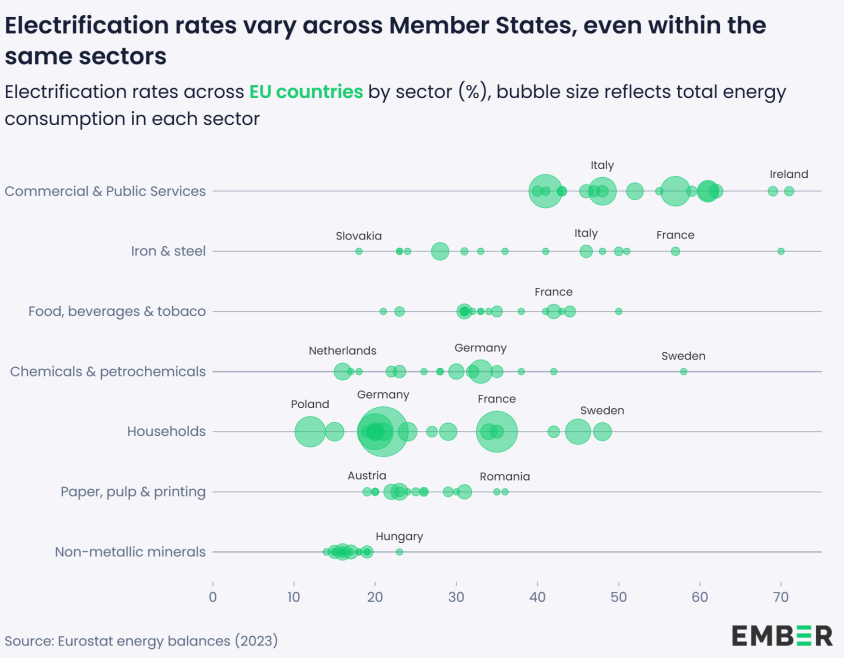
The report also notes that many of the technologies necessary for greater electrification are already available. While 22% of EU electricity demand is currently electrified, “at least a further 67% could be electrified” with technologies that are “ready for market”. The report names heat pumps and electric vehicles (EVs) as key examples of these technologies, suggesting that the EU target of achieving 32% electrification across Europe by 2030 is an achievable goal.
To accelerate electrification, the report makes a number of policy recommendations, including reducing electricity taxes—at present EU industrial electricity consumption is taxed three times higher than natural gas, on average—and introducing mechanisms to reward households and businesses for “smart consumption”.
Ember also called for EU leadership to align energy system planning with electrification targets, taking aim at some of the longstanding grid weaknesses that have undermined the EU energy transition for many years.

